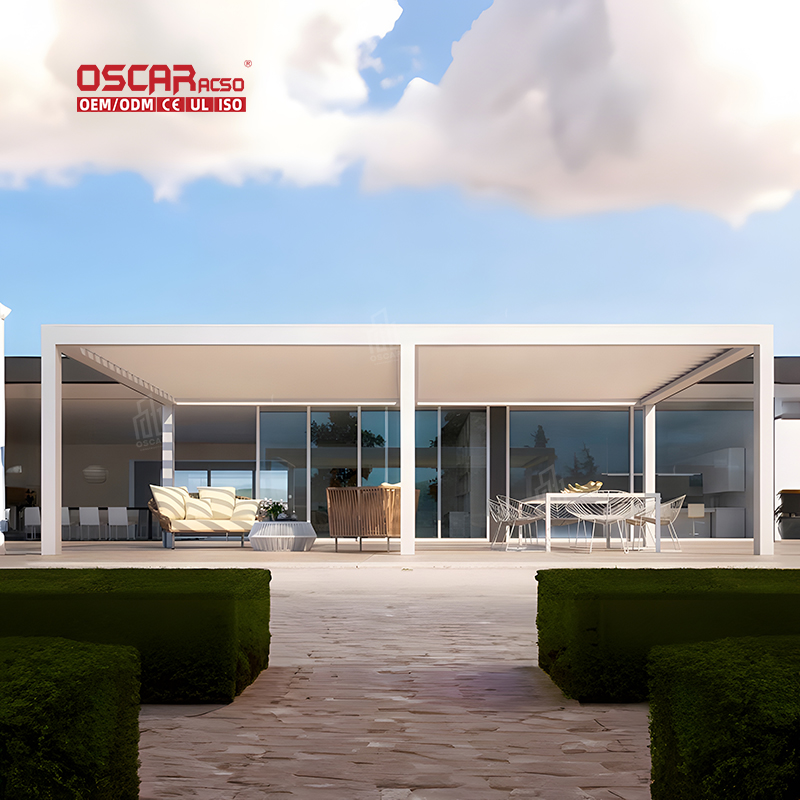Smart Outdoor Living, Two-Climate Pergola Mastery for All Seasons
Imagine an outdoor structure that effortlessly adapts to both scorching summers and chilly winters—welcome to the revolu...

Imagine an outdoor structure that effortlessly adapts to both scorching summers and chilly winters—welcome to the revolutionary concept of the two-climate pergola 🌞❄️. This isn’t just a shade solution; it’s a year-round haven designed to harmonize with nature’s extremes. By blending innovative materials and smart technology, these pergolas create a seamless transition between seasons, ensuring your outdoor space remains functional and inviting no matter what the weather brings.
.jpg)
What Exactly Is a Two-Climate Pergola?
A two-climate pergola is an intelligently designed structure that provides comfort across contrasting weather conditions. Unlike traditional pergolas, which are often static, these feature adjustable elements like louvers, retractable roofs, or integrated shading systems. They can block intense sun during heatwaves and offer protection from rain or wind during colder months, effectively acting as a bioclimatic tool for your backyard .
Why does this matter? Homeowners in regions with dramatic seasonal shifts—think places like Nebraska with its 60 annual freeze-thaw cycles or Houston’s humid storms—need durability and adaptability. This pergola type answers that call with designs that resist material degradation, moisture damage, and high winds .
Core Technologies Behind Modern Two-Climate Designs
The magic lies in the engineering. Key features include:
.jpg)
- •
Adjustable louvers: These can be tilted to control sunlight exposure and ventilation. During summer, they block direct UV rays while allowing hot air to escape; in winter, they can capture low-angle sunlight to warm the area beneath .
- •
Retractable roofs or canopies: Motorized systems enable quick adaptation—open for stargazing on clear nights, closed for rain or snow protection .
- •
Integrated sealing systems: Some models include side panels or sliding glass doors to enclose the space temporarily, creating a buffer against cold drafts or storms .
These technologies are often powered by automation, such as remote controls or sensors that react to weather changes in real-time. For instance, certain pergolas close automatically at the first sign of rain, ensuring uninterrupted enjoyment .
Material Choices for Durability and Efficiency
Selecting the right materials is critical for longevity and performance. Popular options include:
- •
Aluminum: Lightweight, corrosion-resistant, and ideal for humid or coastal areas. It won’t rust or warp, making it low-maintenance and durable .
- •
Treated wood or hardwood: Offers a classic aesthetic but requires regular sealing to withstand moisture and temperature swings. Cedar and redwood are naturally rot-resistant .
- •
Composite materials: Mimic the look of wood while providing enhanced resistance to fading, cracking, and insect damage .
- •
Polycarbonate roofing: Provides UV protection and thermal insulation, allowing light in while sheltering from elements .
For extreme climates, combining materials—such as aluminum frames with ipe wood louvers—can accommodate differential thermal expansion, reducing structural stress over time .
Design Ideas for Every Climate and Lifestyle
Tailoring your pergola to local conditions maximizes its effectiveness. Here’s how:
- •
In hot, humid regions (e.g., Houston or Queensland), incorporate shade sails, climbing plants, or misting systems to enhance cooling. UV-resistant fabrics and insulated roofs help reduce heat buildup .
- •
For cold, windy areas (e.g., Calgary or Nebraska), prioritize solid roofs, wind-blocking screens, and built-in heating elements. Thermal buffers like stone floors or enclosed walls retain warmth .
- •
In variable temperate zones (e.g., Victoria or Tasmania), use deciduous vines or adjustable louvers to balance sun exposure and shade seasonally .
Pro tip: Integrate greenery like grapevines or wisteria—they provide summer shade and shed leaves in winter to allow sunlight through, creating a natural microclimate .
Why Invest in a Two-Climate Pergola?
Beyond aesthetics, these structures offer tangible benefits:

- •
Extended outdoor living: Enjoy your patio or garden year-round, even during unpredictable weather .
- •
Energy savings: By providing shade in summer and insulation in winter, they reduce reliance on indoor HVAC systems, lowering utility bills .
.jpg)
- •
Increased property value: A well-designed, durable pergola enhances functionality and curb appeal, potentially boosting resale value .
- •
Customization and tech integration: From LED lighting to ceiling fans, these pergolas can be outfitted for comfort and ambiance .
In my view, the rise of two-climate pergolas reflects a broader shift toward adaptive and sustainable architecture. As weather patterns become more erratic, investing in structures that offer resilience and efficiency isn’t just smart—it’s essential for future-proofing our homes 🏡.
Looking ahead, expect even smarter integrations: solar-powered features, AI-driven climate adjustments, and greener materials that minimize environmental impact. For now, choosing a two-climate pergola means investing in endless days of outdoor joy, regardless of what the forecast says 🌦️.

